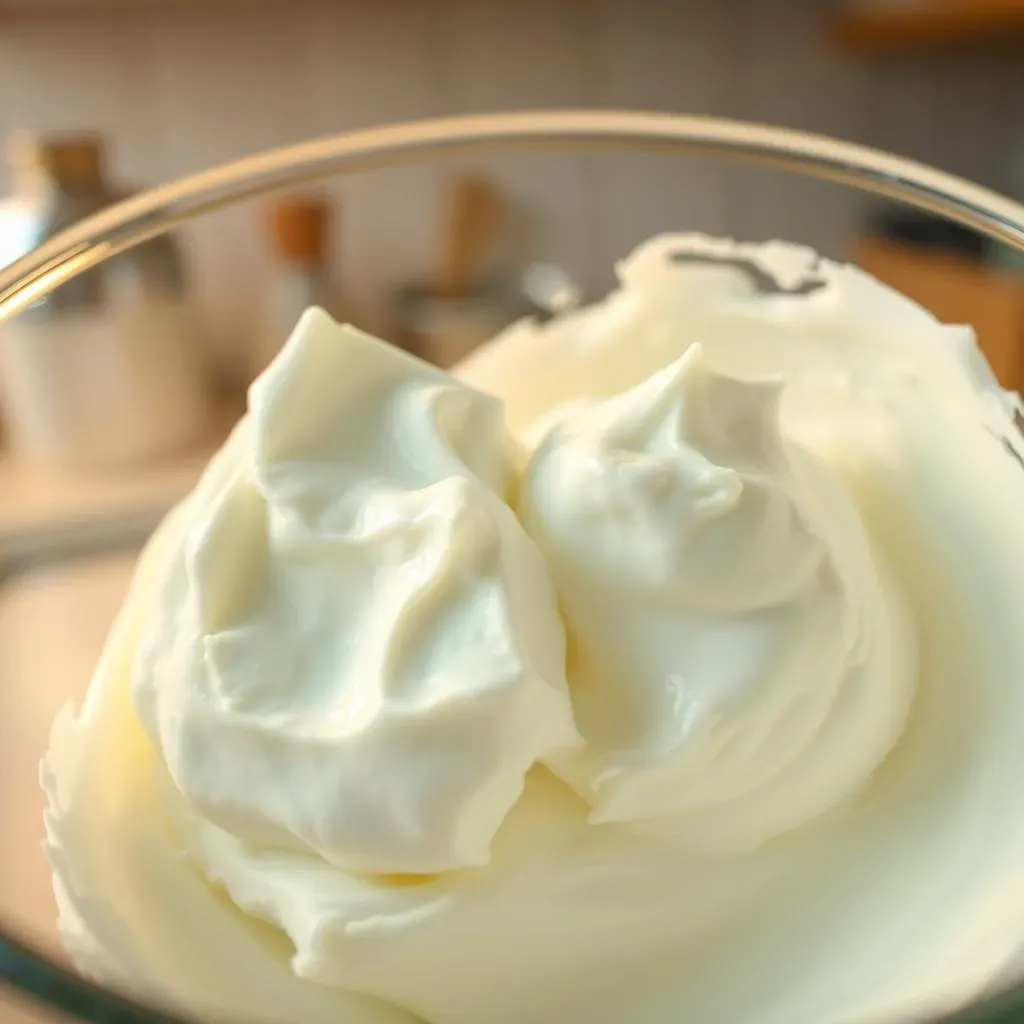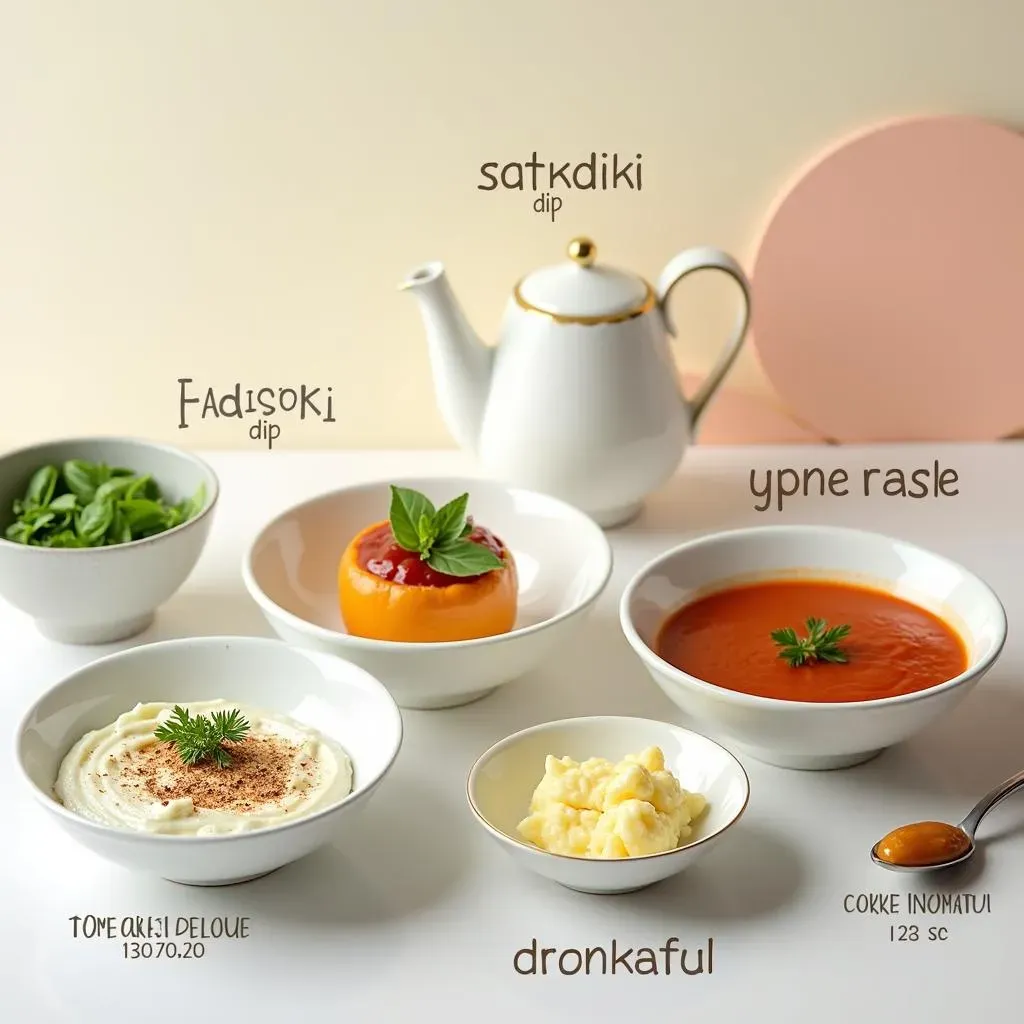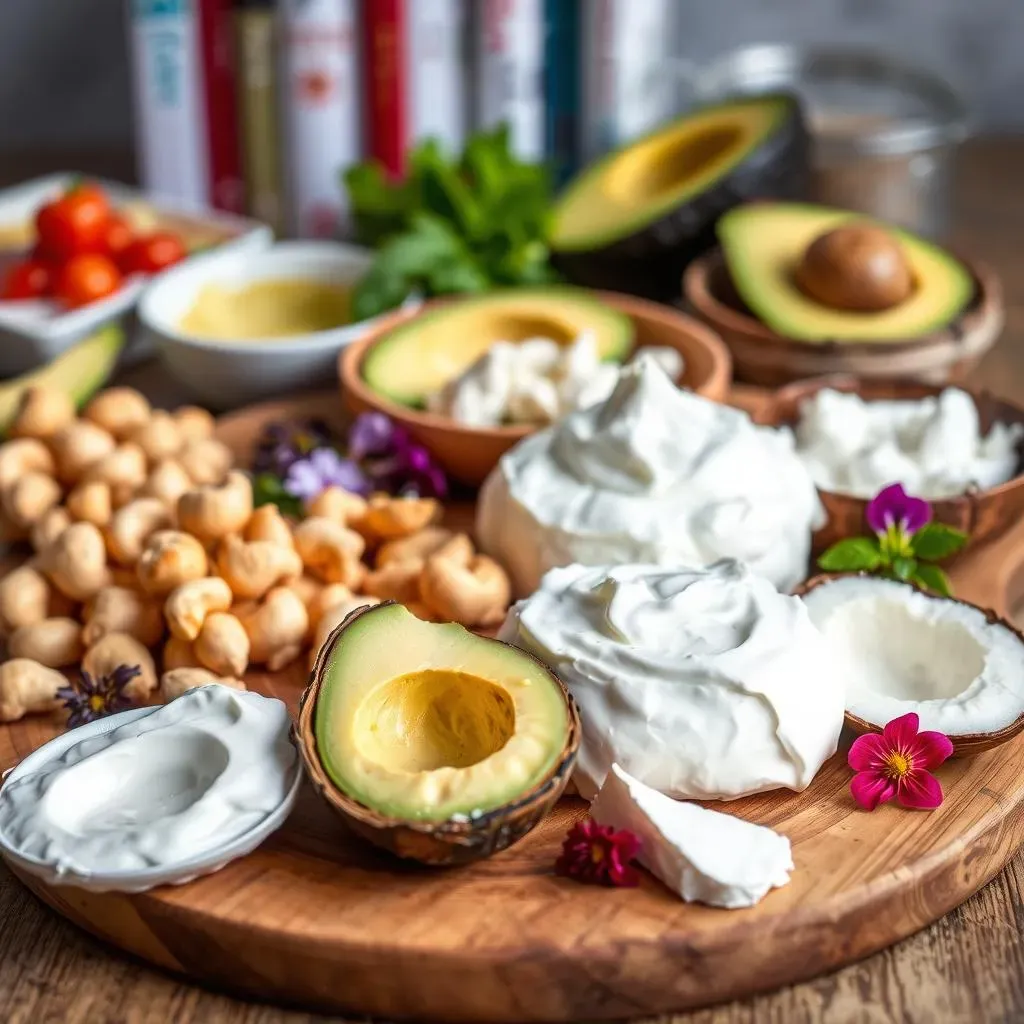Table of Contents
Ever stared blankly at a recipe, realizing you're missing a key ingredient? Specifically, have you ever wondered, "Can sour cream be substituted for yogurt?" It's a common cooking dilemma, and the answer isn't always a simple yes or no. This article dives deep into the world of sour cream and yogurt, exploring their similarities and crucial differences. We'll unpack when a swap is a smart move and when it might lead to a culinary catastrophe. We'll examine specific recipes, highlighting instances where the substitution shines and where it falls flat. Finally, we'll explore alternative options if neither sour cream nor yogurt fits the bill. Get ready to become a substitution savvy chef! Prepare to master the art of ingredient swaps and confidently tackle any recipe, no matter what your pantry holds. Let's find out exactly when you can confidently use sour cream in place of yogurt, and when you should reach for something else entirely. So, let's get started on your journey to culinary confidence!
Understanding Sour Cream and Yogurt: Key Differences

Understanding Sour Cream and Yogurt: Key Differences
Understanding the Basics
So, you're diving into the world of sour cream vs. yogurt substitutions? Fantastic! Let's start with the fundamentals. Both are fermented dairy products, giving them a similar tangy flavor profile. However, their textures and fat content differ significantly. Sour cream, typically made from cultured cream, boasts a thicker, richer consistency. It's higher in fat, lending a creamier mouthfeel to dishes. Think of that decadent swirl atop your chili or baked potato – that's sour cream's signature richness at play. Yogurt, on the other hand, is made from fermented milk. It comes in various fat percentages, from nonfat to full-fat Greek yogurt. Greek yogurt, with its strained texture, often gets mistaken for sour cream, but it still lacks the same intense richness. Choosing the right type of yogurt is crucial for successful substitutions, as we'll explore later. For more info on specific yogurt types and their suitability, check out our guide on substituting Greek yogurt for sour cream.
The differences in their production methods also create variations in their acidity and overall flavor. Sour cream tends to have a more pronounced tang, while yogurt can range from subtly tart to quite acidic depending on the type and culture used. This difference might seem minor, but it can significantly impact the final taste of your recipe. For instance, in a delicate dessert, the sharper tang of sour cream might overpower other flavors, whereas a milder yogurt might blend in more seamlessly. If you're experimenting with sour cream substitutes in baking, you might find that using a sour cream substitute can be tricky. It’s vital to consider these nuances when deciding whether to swap one for the other.
Characteristic | Sour Cream | Yogurt |
|---|---|---|
Base | Cultured cream | Fermented milk |
Fat Content | High | Varies (nonfat to full-fat) |
Texture | Thick, creamy | Ranges from thin to thick (Greek yogurt is thicker) |
Tanginess | Pronounced | Varies |
Fat is Where it's at
The fat content is a major player in the sour cream vs. yogurt game. Sour cream’s higher fat content contributes significantly to its rich, creamy texture. This richness is essential in many recipes, providing moisture and a luxurious mouthfeel. Think of a creamy potato salad—the richness from sour cream is key to its texture and taste! Substituting with a low-fat yogurt might result in a drier, less flavorful dish. However, full-fat yogurt, especially Greek yogurt, can often stand in quite well due to its similar consistency. If you are looking for a way to use sour cream instead of cream, it's important to consider the fat content.
When substituting, consider the recipe's overall fat content. If the recipe already uses a lot of other fatty ingredients, using full-fat yogurt might be overkill. In such cases, a lower-fat option might be a better choice. Conversely, if the recipe leans towards leaner ingredients, using full-fat yogurt or even sour cream could add welcome richness. It's all about achieving a balanced flavor and texture profile. Remember, you can always adjust the recipe to suit your needs – adding more or less liquid to achieve the desired consistency. For more ideas on other substitutes, explore our article on substituting sour cream with various ingredients.
- Consider the recipe's other ingredients.
- Adjust liquid amounts if needed.
- Taste as you go!
Sour Cream as a Yogurt Substitute: When It Works and When It Doesn't

Sour Cream as a Yogurt Substitute: When It Works and When It Doesn't
Swapping Strategies
Right, let's tackle this head-on: when can you actually swap sour cream for yogurt, and when is it a recipe for disaster? The short answer is: it depends heavily on the recipe and what you're aiming for. In many cases, especially when dealing with cold dishes like dips or dressings, a thicker full-fat yogurt (Greek yogurt is your best bet!) can be a pretty decent stand-in. Its tangy flavor and creamy texture can often mimic sour cream quite well. Think of a simple tzatziki – swapping in full-fat Greek yogurt for sour cream will hardly make a difference. For more ideas on specific yogurt types, check out our guide on using Greek yogurt for sour cream.
However, things get trickier when heat is involved. Sour cream's higher fat content means it holds up better to high temperatures and acidic ingredients than yogurt does. Yogurt, especially low-fat varieties, tends to curdle or separate when exposed to heat or acids. This can result in a grainy, unpleasant texture that completely ruins your dish. So, while you might get away with it in a mildly heated sauce, using sour cream as a yogurt substitute in baking is generally not recommended. You'll want to carefully consider the recipe's ingredients and cooking method before making the swap.
- Cold dishes: Generally safe to substitute with full-fat Greek yogurt.
- Hot dishes: Proceed with caution; low-fat yogurt is risky.
- Baking: Usually not recommended due to curdling.
Texture Troubles
Let's talk texture. Sour cream's signature creaminess comes from its higher fat content. This richness is what makes it so delightful in dishes where a smooth, luscious texture is key. Think of the creamy coating on a baked potato or the luxurious feel of a creamy soup. Substituting with yogurt, especially low-fat varieties, can result in a thinner, less creamy final product. While full-fat Greek yogurt gets closer, it still won’t perfectly replicate that rich sour cream texture. For a better understanding of this, check out our comprehensive guide on using sour cream instead of plain yogurt in various recipes. It's a good read, promise!
This difference in texture is especially noticeable in baked goods. Sour cream contributes moisture and richness, resulting in a tender, moist crumb. Using yogurt instead might lead to a drier, less flavorful final product. If you’re determined to use yogurt, consider using a full-fat Greek yogurt and perhaps adding a touch of extra moisture to compensate for the difference in fat content. Again, the best approach is to carefully consider the recipe's desired texture before making the swap. For more detailed insights on how to substitute sour cream in various baking recipes, have a look at our article on sour cream as a baking ingredient. This will give you a better idea of when it’s a good idea.
Recipe Type | Sour Cream Substitute (Yogurt) | Considerations |
|---|---|---|
Cold dips/dressings | Full-fat Greek yogurt | Excellent substitute, similar texture and tang |
Hot sauces/soups | Full-fat Greek yogurt (use cautiously) | May curdle; low-fat yogurt is not recommended |
Baked goods | Not recommended | May result in a dry, less flavorful product |
Exploring Specific Recipes: Successes and Potential Pitfalls

Exploring Specific Recipes: Successes and Potential Pitfalls
Exploring Specific Recipes
Let's get practical! We've covered the theory; now, let's see how sour cream and yogurt substitutions play out in real-world recipes. One area where the swap often works beautifully is in cold dips and dressings. Think tzatziki—the creamy tang of full-fat Greek yogurt is a fantastic stand-in for sour cream. The texture is similar enough, and the flavor difference is minimal, resulting in a delicious and often healthier version of the classic Greek dip. For more ideas on using Greek yogurt as a substitute, check out our guide on Greek yogurt for sour cream.
However, things can go south quickly when we move into the realm of baking. Sour cream's higher fat content contributes significantly to the moisture and tenderness of baked goods. Substituting with yogurt, even full-fat Greek yogurt, can result in a drier, less flavorful outcome. This is especially true for recipes where sour cream plays a crucial role in the texture, like muffins or coffee cakes. For example, trying to substitute sour cream with yogurt in a recipe like a sour cream coffee cake might lead to a disappointingly dry cake. While you can try to compensate by adding extra liquid, you might not be able to replicate that signature sour cream moistness and richness. For more tips on baking with sour cream, check out our article on sour cream in baking.
Recipe | Sour Cream Substitute | Outcome |
|---|---|---|
Tzatziki | Full-fat Greek yogurt | Excellent substitute; similar texture and flavor |
Sour Cream Coffee Cake | Full-fat Greek yogurt | Likely dry and less flavorful; not recommended |
Creamy Tomato Soup | Full-fat Greek yogurt (use cautiously) | May curdle if heated too much |
Another area to watch out for is in recipes that involve heat or acidic ingredients. Yogurt, particularly low-fat varieties, is prone to curdling when exposed to high temperatures or acidic components like lemon juice or vinegar. This can lead to a grainy, unappetizing texture that ruins the dish. For example, adding yogurt to a hot chili might result in a separation of the yogurt, ruining the overall consistency of the chili. Sour cream, due to its higher fat content, is much more tolerant of heat and acid. Consider this when deciding whether to swap in yogurt for sour cream in dishes containing tomatoes, lemon juice, or vinegar. If you are looking for a substitute for sour cream in a dish with acidic ingredients, you might want to check out our article on sour cream substitutes for buttermilk, which often works well in acidic recipes.
Ultimately, the success of a sour cream-for-yogurt substitution hinges on understanding the specific requirements of the recipe. Consider the cooking method, the other ingredients, and the desired texture. Experimentation is key – start with small batches and taste as you go! With a little practice and careful consideration, you can confidently navigate the world of sour cream and yogurt substitutions and create delicious dishes, regardless of what’s in your fridge. If you're looking for even more options, our article on sour cream substitutes will give you a great overview of various alternatives.
- Always consider the recipe's ingredients and method.
- Start with small batches to test the substitution.
- Taste and adjust as needed.
Dairy Alternatives and Beyond: Other Options to Consider

Dairy Alternatives and Beyond: Other Options to Consider
Dairy-Free Delights
Let's face it: not everyone can or wants to use dairy. Thankfully, there are plenty of dairy-free alternatives that can work wonders as sour cream or yogurt substitutes, depending on the recipe. For a creamy, tangy texture in vegan dishes, cashew cream is an excellent choice. Simply blend soaked cashews with water and a touch of lemon juice for a surprisingly versatile substitute. It works well in dips, sauces, and even some baked goods, though it might not provide the same lift as sour cream in leavening. For a more detailed exploration of dairy-free alternatives, check out our guide on sour cream substitutes for applesauce, which offers some unexpected options.
Other options include silken tofu, which provides a wonderfully smooth and creamy texture, especially when blended with a bit of lemon juice or vinegar for tang. Coconut cream, while richer and sweeter, can also add a unique twist to certain recipes. Remember, the key is to experiment and find what works best for your taste and the specific recipe you're working with. However, keep in mind that these alternatives might not always perfectly replicate the flavor or texture of sour cream or yogurt. For instance, using silken tofu as a sour cream substitute for cottage cheese will yield a completely different result.
- Cashew cream: Creamy, tangy, versatile.
- Silken tofu: Smooth, creamy, adaptable.
- Coconut cream: Rich, sweet, unique flavor.
Beyond the Usual Suspects
Sometimes, thinking outside the dairy box leads to surprisingly delicious results. Depending on the recipe, you might find that other ingredients can effectively mimic the role of sour cream or yogurt, albeit with a different flavor profile. For instance, in some recipes, you could use mashed avocado to create a creamy texture, though it lacks the tang. Similarly, you might consider using mayonnaise in certain dressings or sauces, but its flavor is quite distinct from both sour cream and yogurt. The mayonnaise substitute is especially useful when you are looking for a sour cream substitute for mayonnaise in recipes that require a rich and creamy texture.
It's crucial to consider the desired flavor and texture of the final dish when exploring these less conventional substitutions. Sometimes, a slight alteration in the recipe might be necessary to compensate for the differences in flavor and texture. For example, you might need to adjust the amount of seasoning or add a touch of lemon juice to achieve the desired tanginess. Again, experimentation is key! Remember, cooking is all about creativity and finding what works best for you. If you're looking for more unusual substitutes, you can also check out our article on sour cream substitutes for applesauce and other unexpected ingredients.
Substitute | Suitable for | Considerations |
|---|---|---|
Mashed avocado | Creamy textures; not tangy | Adds richness, but lacks tang; adjust seasoning |
Mayonnaise | Dressings, sauces | Distinct flavor; may need flavor adjustments |